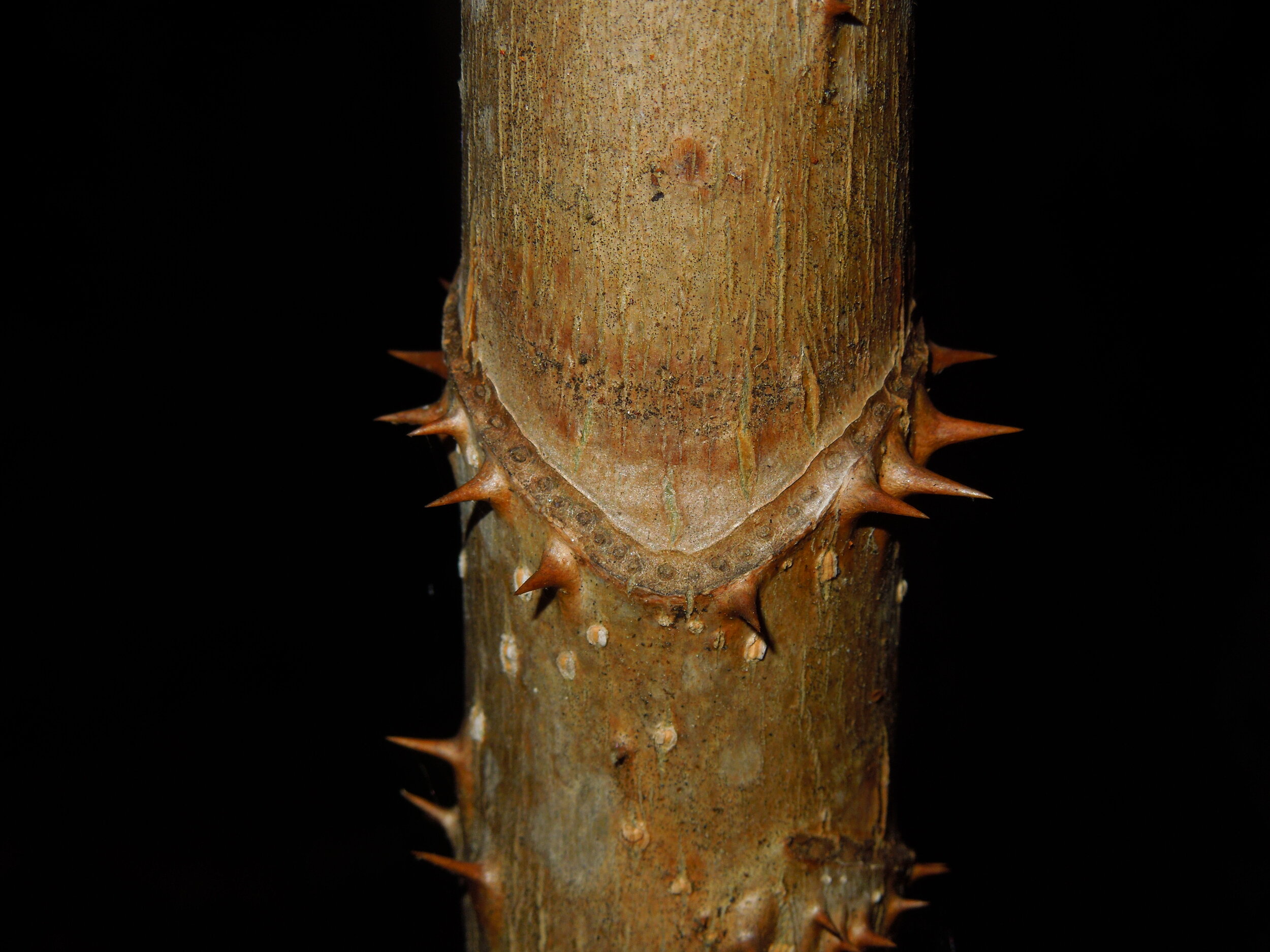The name "Devil's walking stick" just sounds cool. You can imagine my excitement then when I first laid eyes on the species it refers to. Aralia spinosa is no ordinary tree. It is a hardy species ready to take advantage of disturbance. Armed with spikes and a canopy that looks like it belongs in some far off tropical jungle, the Devil's walking stick is a tree species worth knowing.
I used to think that spikenard (Aralia racemosa) was the most robust member of the aralia family found in North America. Not so. The Devil's walking stick is a medium sized tree capable of reaching heights of over 30 feet (10 m). Most interesting of all, its triply compound leaves are the largest leaves of any temperate tree in the continental United States.
The Devil's walking stick can be found growing in disturbed areas and along forest edges throughout a large swath of eastern North America. When young it is a rather spiny lot. These are not true spines, which are modified parts of leaves, but rather prickles, which arise from extensions of the cortex or epidermis.
As it grows, however, it loses a lot of its prickliness. Such armaments are costly to produce after all. It is believed that younger plants develop these structures while they are still at convenient nibbling height, only to lose them once they grow big enough to avoid hungry herbivores. Research has shown that most herbivorous mammals alive today do not bother much with the Devil's walking stick, which has led some to suggest that these defenses evolved back when this side of the continent was brimming with much larger herbivores such as elk and bison.
As if the giant compound leaves of this tree were not stunning enough, the surprisingly large inflorescence is sure to blow you away. Typical of the family, it consists of hundreds of tiny green flowers. Despite their size, they are a boon for pollinators. A tree in full bloom comes alive with bees and butterflies alike. Flowers soon give way to clusters of berries, which are a favorite food among birds. All in all this is one cool tree.


